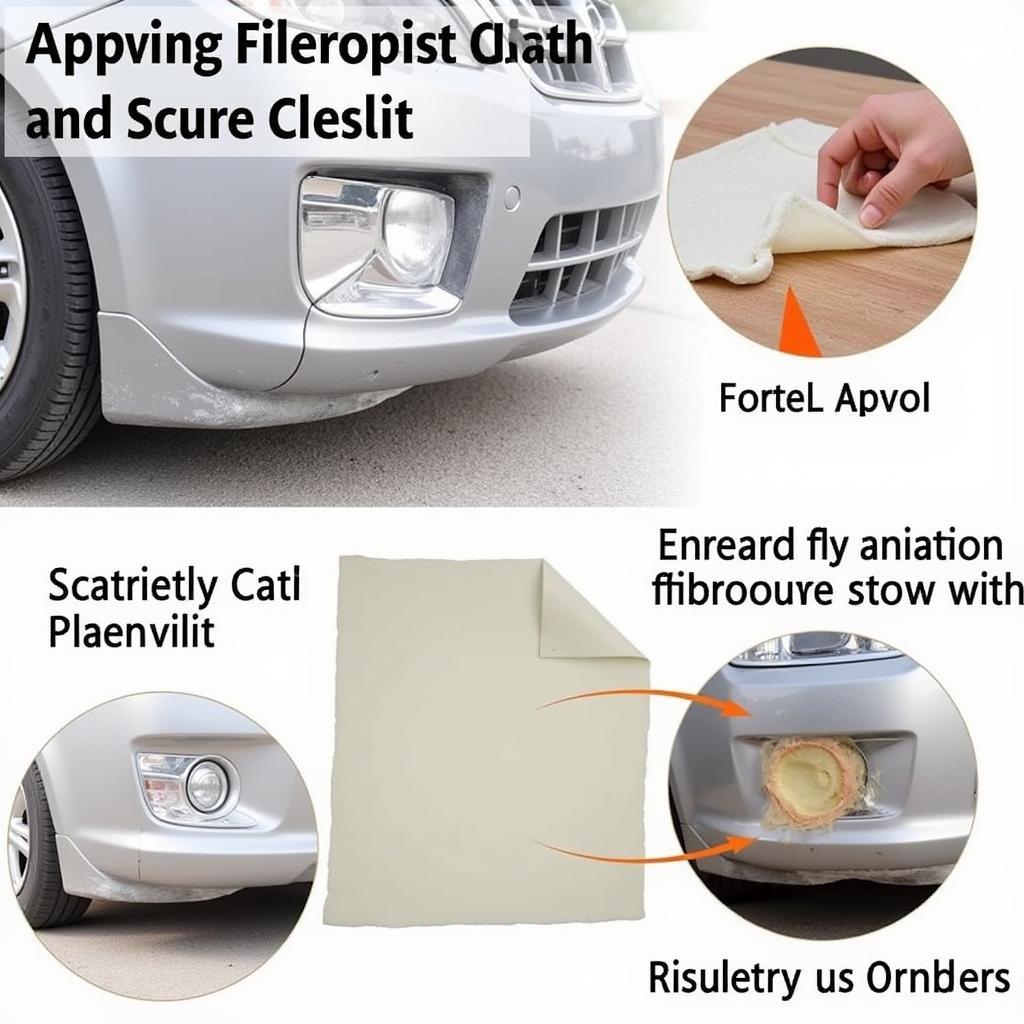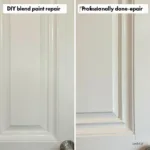A cracked car bumper is an unsightly problem, but often a surprisingly easy fix. Whether you’ve suffered a minor parking lot mishap or a more serious collision, this guide provides a comprehensive overview of how to repair a cracked plastic car bumper yourself, saving you potentially significant body shop costs. This includes everything from assessing the damage to choosing the right repair materials.
Fixing a cracked bumper involves several steps, starting with assessing the damage. Minor cracks can often be repaired with a plastic repair kit, while more significant damage might require professional intervention. We’ll cover all the scenarios to help you make the best decision for your situation. Learn how to repair cracked plastic car bumper effectively with our comprehensive guide.
Assessing the Damage: Minor vs. Major Cracks
Before starting the repair, carefully examine the cracked bumper. Determine the severity of the damage – is it a hairline crack, or is the bumper deeply gouged or split? Is the crack on a smooth surface or near a complex curve? This assessment will guide your repair strategy. Minor cracks can often be repaired using plastic welding or epoxy, while more extensive damage might require replacing the entire bumper cover.
For smaller imperfections like scuffs, consider exploring options like how to repair car bumper scuffs.
Gathering Your Tools and Materials
Once you’ve assessed the damage, gather the necessary tools and materials. For minor cracks, a plastic repair kit, sandpaper, and a heat gun or soldering iron will suffice. Larger repairs may necessitate a fiberglass repair kit, body filler, and painting supplies. Always ensure you have proper safety equipment, including gloves and eye protection.
How to Repair Minor Cracks in a Plastic Car Bumper
For hairline cracks and small chips, a plastic repair kit is the ideal solution. These kits typically include a plastic welding tool, reinforcing mesh, and plastic filler. Clean the area thoroughly with soap and water, then roughen the surface around the crack with sandpaper. Following the kit’s instructions, melt the plastic welding rods into the crack, using the reinforcing mesh to bridge the gap. Finally, smooth the repaired area with sandpaper and apply plastic filler if needed. This method provides a durable and almost invisible repair.
For DIY enthusiasts, exploring car bumper repair at home can provide valuable insights and step-by-step instructions.
Repairing Major Bumper Damage
Larger cracks and splits require a different approach. For significant damage, you may need to use fiberglass cloth and resin to reinforce the bumper. Clean the area and roughen the surface. Apply layers of fiberglass cloth saturated with resin, allowing each layer to dry before applying the next. Once the fiberglass has cured, use body filler to smooth out the repair, then sand and prime the area before painting.
Finishing Touches: Sanding, Priming, and Painting
Whether you’ve repaired a minor crack or major damage, proper finishing is essential for a professional-looking result. Sand the repaired area smooth, ensuring a seamless transition between the repaired section and the surrounding bumper. Apply primer to promote paint adhesion and prevent rust. Finally, paint the repaired area, blending the new paint with the existing bumper color.
If you’re looking for a quick fix for dents, a car bumper dent repair kit might be a good option. However, for cracks, the methods outlined above are more suitable.
When to Consult a Professional
While many bumper repairs can be done at home, some situations warrant professional attention. If the damage is extensive, involves structural components, or you’re uncomfortable undertaking the repair yourself, consult a qualified body shop. They have the expertise and equipment to handle complex repairs and ensure a safe and aesthetically pleasing outcome.
You might also consider professional help for specific types of repairs, like car bumper plastic molding repair, which can be intricate and require specialized tools.
In conclusion, repairing a cracked plastic car bumper can be a manageable DIY project, saving you money and the inconvenience of a body shop visit. By accurately assessing the damage, using the correct techniques and materials, and paying attention to detail, you can restore your bumper to its former glory. Remember to prioritize safety throughout the repair process.
FAQ
- Can I repair a cracked bumper myself? Yes, many bumper cracks can be repaired at home with the right tools and materials.
- What type of plastic are car bumpers made of? Most modern bumpers are made of thermoplastic olefins (TPO) or polypropylene (PP).
- How much does it cost to repair a cracked bumper professionally? Professional repairs can range from a few hundred to several thousand dollars depending on the extent of the damage.
- How long does a DIY bumper repair take? A DIY repair can take several hours, depending on the severity of the damage and the drying times of the materials used.
- What is the best type of plastic repair kit to use? Choose a kit specifically designed for automotive plastics, and ensure it includes the necessary tools and materials for your type of repair.
- How can I prevent my bumper from cracking in the future? Be mindful of parking curbs and avoid low-speed collisions.
- Can I paint the repaired area myself? Yes, with the proper preparation and paint matching, you can achieve a professional-looking finish.
Have more questions? Check out these other helpful articles: How to Repair a Dent in a Car Bumper, How to Repair Scratches on a Car Bumper.
Need assistance with your car bumper repair? Contact us via WhatsApp: +1(641)206-8880 or Email: [email protected]. Our customer support team is available 24/7.


